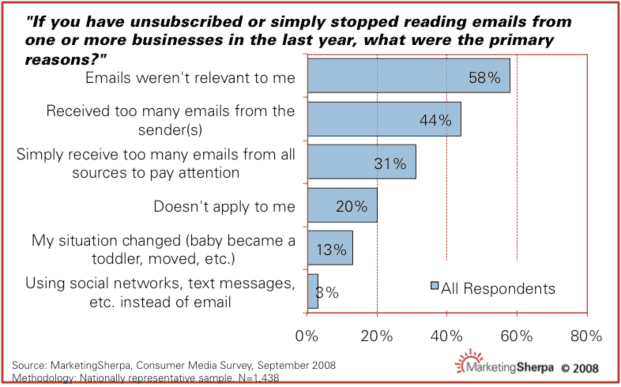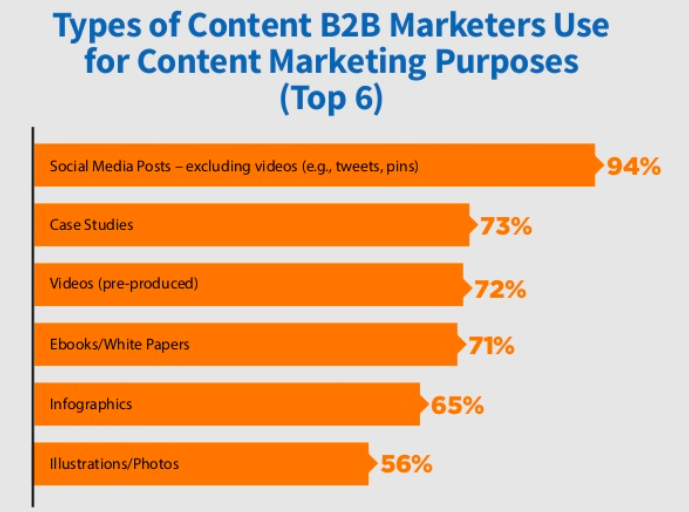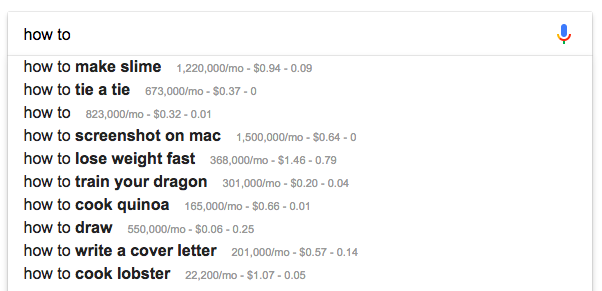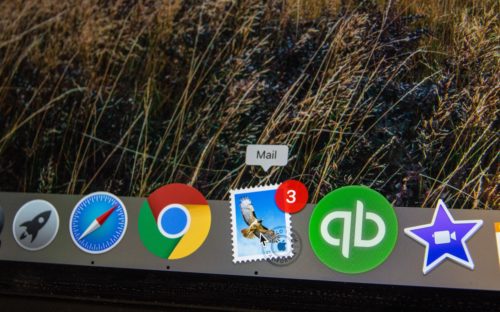With an average ROI of 3,800 percent, email remains one of the most powerful tools that B2B marketers can leverage to nurture leads. But that doesn’t mean it’s easy to find success using email.
Think about it. You have to:
- Get permission from the recipient to send the email in the first place.
- Convince the recipient to open the email.
- Encourage the recipient to read the email.
- Entice the recipient to take action.
That’s a lot of work, but when you’re able to accomplish all those steps, it pays off. (Remember: 3,800 percent!)
So how do you make email work for you?
One way is by staying relevant. A survey by MarketingSherpa found that the primary reason people unsubscribe from or stop reading emails is a lack of relevant content.

If you provide your contacts with relevant, useful content every time, they will consistently open and read your emails. This brings us to the other reason people will open emails:
Trust.
When people trust you, they tend to be more receptive to what you have to say.
If a lead ends up in your contact list, it’s likely they’ve downloaded a resource or filled out a form on your site, in which case they’ve opted to give you a verified email address.
That definitely shows some initial trust on their part, and is a great first step toward getting them down the funnel.
But not so fast.
There is still more work to be done on your part. You may have their contact info, but that doesn’t mean you should start bombarding their inbox with sales requests. You have to reel them in. You have to form a relationship. You have to give them a reason to listen to what you have to say.
So before you even think about having a sales conversation with these leads, you have to build their trust. How? By giving them useful content from the start.
Here are the best types of content for capturing a lead’s attention upon first contact:
Relevant & Valuable Case Studies
What better way to establish trust than with a well-written case study that addresses the problems your lead is facing? It’s a chance to show off your company’s past success while demonstrating that you understand the recipient’s needs.
According to the B2B Content Marketing 2018: Benchmarks, Budgets, and Trends report by the Content Marketing Institute, more than 70 percent of B2B marketers identified case studies as one of the assets they use in their content marketing efforts. In that same study, 47 percent of the most successful marketers identified case studies as one of their most valuable content marketing assets.

Case studies clearly demonstrate what you can do and how you can do it. They spell out your methodology in black and white.
Here’s an example of how to reach out with a case study:
Hey {First Name},
How are things going with {Insert Brand Name}? I noticed that over the last month you’ve been investing in Facebook and Google advertising. At {Brand Name}, we help organizations like yours ensure that their media budget is being best spent and optimized for results. I think there are a few areas in which you could improve your current paid media spend.
Here are a few simple opportunities you may be overlooking:
> [Tip 1]
> [Tip 2]
> [Tip 3]
We put together a case study about how we helped [Similar Company] find success using paid media. Would you be interested in checking it out? They went from a XX click-through rate on their advertisements to XX. Let me know!
If you don’t have any case studies on hand, take the time to put a few together. Yes, they may take a while to create, but the end results are worth it.
Industry Or Brand Research
Remember: The most effective way to get a response when you’re reaching out to a lead is to make it about them. What are they looking for? What’s going to make their business succeed?
One way to do this is to spend time learning about their industry. Learn about their product or service, their target audience and what their competitors are doing.
Here’s an example of how to reach out with relevant industry or brand research:
Hey {First Name},
I read {Brand Name}’s most recent post about the 10 things you need to know about [Keyword]. What a great read! I noticed that you use the term [Keyword] quite often. That inspired me to do a bit of digging and what I uncovered is that if you instead used [Longer Keyword], you could benefit from a higher monthly search volume and potentially get your posts in front of more eyes.
I put together some other keyword comparisons for you in the spreadsheet attached if you’d care to take a look.
Looking forward to reading more great content from you guys!
You can use Moz’s Keyword Explorer tool to find their site’s highest ranking keywords, then plug them into another tool like Buzzsumo to see what types of content are performing best for other brands using the same or similar keywords. This will allow you to offer some research-backed, SEO-based suggestions for content.
The key here is that you’re providing valuable insights that your lead can use to improve their reach.
How-To Guides
People are always looking to learn new things and DIY the solutions to their problems.
Preface any search inquiry with two simple little words—“how to”—and Google will instantly present you with thousands of articles on how that thing is, or should be, done. With a monthly search volume of 823,000, these two words may be small, but boy are they mighty.

As you can see, people search for how to do everything. It’s a wonder how we learned to do anything before the internet came along.
Anyway, the point here is that humans are curious beings and we benefit from knowledge. It’s how the world moves forward. And one of the best ways to pique someone’s interest is to teach them something they don’t know.
When you’re positioning a new resource with your contacts, don’t say “check out this new eBook on [topic]” and leave it at that. Such a statement is dull and impersonal and not likely to inspire them to open the eBook. Instead, explain why they should open it—what will it do for them?
Try something like this:
Hey {First Name},
I noticed {Brand Name} just launched on Shopify ‒ congrats! How amazing did it feel to press that publish button?
Not too long ago, I released a how-to guide all about optimizing a Shopify website for SEO. In it, I break down specific insights on things like [Topic], [Topic] and [Topic].
Launching your site is just the first step; I’d love to show you how you can increase your traffic and sustain its growth long-term. If you’d like to give it a read, let me know!
Remember, it’s about teaching vs. selling. Benefits over features.
Pro tip: Don’t always ask for information in return for your content. They already gave you their contact information; it’s OK to give away some of your best content in return. That in itself builds some major rapport.
Problems They May Not Know About
Always keep your focus on what you can do to improve the lives of your potential customers.
It’s not about what you want, it’s about what they need. If you can point out something amiss with your lead’s site or social media that could be hindering their business activities, that’s a big—but simple!—win for both of you.
If you spot a typo or a broken link, all you have to do is reach out and say:
Hey {First Name},
Love your most recent post about [ABC]! Lots of great insights there that I, as someone also in the B2B space, certainly find useful.
While I was on your site, I went to follow you on Twitter but discovered that the social link is broken. I wanted to give you a heads up so no one else faces the same issue!
Here’s a screen grab:
I still found your profile and am now following. Looking forward to connecting further!
Cheers!
Take the time to some dive into their website and old posts to see what you can find. You’re sure to find something that’s escaped their notice, and pointing it out is an easy way in. Your prospects will always appreciate this type of outreach and the attention you’re giving their content.
Brand-Tailored Content
Just as consumers appreciate personalized content, so too do brands.
To get your lead’s attention, do something that your competitors may not be thinking about—something truly helpful to your lead and their business.
One idea is to assess how your lead’s online presence is holding up. Do a quick audit of their social pages and website and offer specific ways to improve.
For example, say your lead has a broken link on their site. You could reach out to advise them of the redirect and then provide something of added value. For example:
Hey {First Name},
I noticed the link leading to [Reference Link] on your homepage [Link to Page] appears to be broken. I wanted to point it out so that it doesn’t impede your traffic going forward.
While we’re at it, there are a few ways I see for you to optimize your entire homepage to drive more traffic to the rest of your site. I put together a quick video of 10 tips that you can reference during your next audit/review. Check it out and let me know if you have any questions!
Cheers!
Businesses are often so focused on selling their products and servicing their clients that their marketing efforts can easily fall through the cracks. Reaching out to them with little tidbits like this can force them to take a much-needed pause for reflection that they’ve been pushing aside for months.
Bonus: Use Drake References
Kidding. Kind of…
So there you have it. If you want to reach people in their inboxes, sending endless sales pitches is not going to do it. You’ve got to build trust and get them to engage.
Upon initial contact, it’s all about the value you can provide—showing your leads how you can help rather than telling them.
My hope is that you can take these tips and apply them to your outreach efforts. Feel free to use the examples as templates, but make the voice your own.
Do you have any success stories from reaching out to leads via email? I’d love to hear them! Leave me a comment below.








